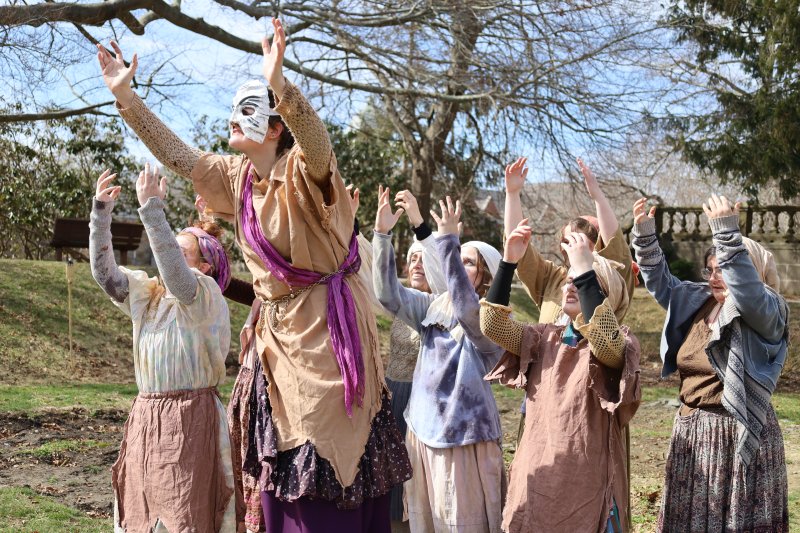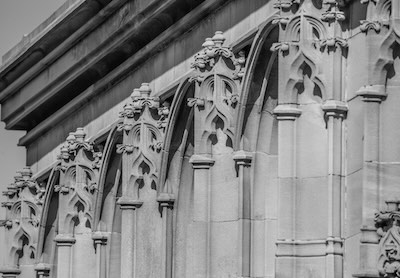
Salve’s haunted halls tell stories of faith, folklore and the Gilded Age
Happy Halloween, Seahawks! Read if you dare...
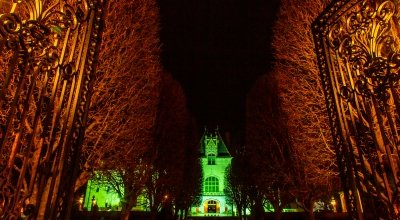
Newport’s past lingers everywhere at Salve Regina University. Beneath the ivy-covered stone and sea-sprayed cliffs, stories of grandeur, tragedy and faith echo through the halls. Once home to Gilded Age families, these mansions now form the heart of a thriving campus – but on some nights, their history feels startlingly close.
This October, Salve’s History Club invited the community to rediscover these stories through a lantern-lit ghost tour, weaving together the city’s architectural legacy and the legends that refuse to fade.
McAuley Hall
With its red sandstone exterior, McAuley Hall, once called Vinland, stands like a crimson jewel on the edge of the sea. It was built in 1882 for Catherine Lorillard Wolfe, a philanthropist and art collector who was a major donor to the Metropolitan Museum of Art in New York City. Many of the paintings that she had hanging in Vinland are now in the museum.
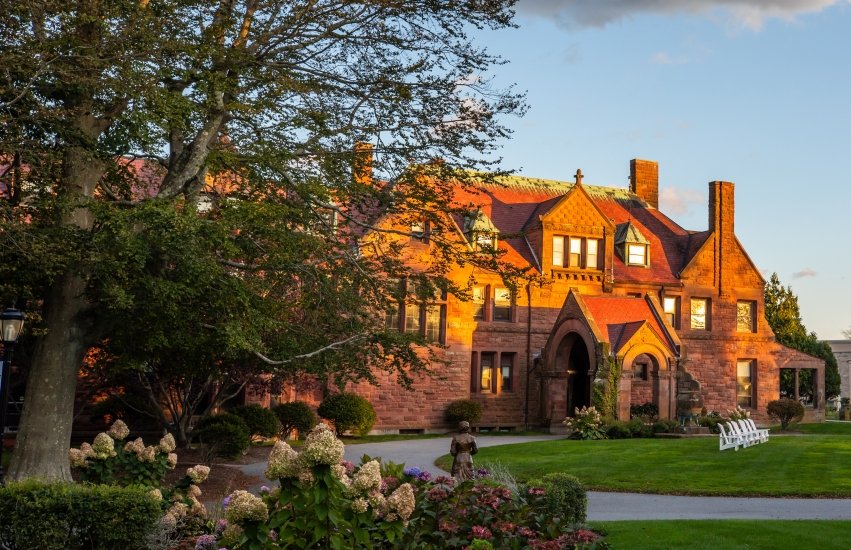
Wolfe, who never married, poured her energy into art and charity, and her fascination with Norse mythology inspired the name “Vinland,” as she believed the Vikings had settled in Newport centuries earlier. Viking enthusiasts like her thought that the Old Stone Mill on Bellevue Avenue was the ruin of a Viking settlement. The carvings and symbols woven throughout McAuley Hall speak to that belief.
Wolfe died five years after Vinland’s completion. Today, it is home to faculty offices and classrooms – but some say it also holds echoes of the past: faint footsteps, flickering lights and the soft sound of waves against the cliff that seem to hum with her legacy.
Ochre Court
Built in 1892 for Ogden Goelet, the French château-style mansion became the foundation of Salve Regina University when it was gifted to the Sisters of Mercy in 1947.
The Sisters transformed its gilded halls into classrooms, dormitories and a chapel. Yet even now, the building feels alive with history. Goelet died suddenly in 1897, five years after Ochre Court’s completion, while yachting off the coast of England. His death was so unexpected that his body was brought back to Newport by ship. Staff and visitors sometimes note a figure pacing the ocean-facing terraces, or pick up the faint scent of phantom cigar smoke drifting through the rooms.
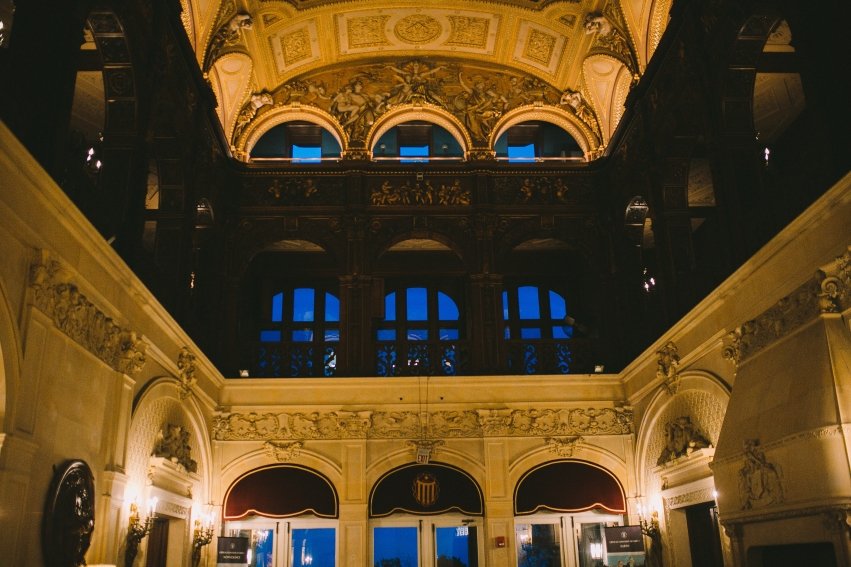
Not all of Ochre Court’s legends belong to the Gilded Age. One of its most haunting tales dates back to the 1960s, when a young woman reportedly fell into despair over personal hardship. Over the decades, her story has blurred into campus folklore, some say she leapt from the upper balcony, others that she met her end in one of the quiet upstairs rooms. Late at night, students and staff have described seeing a woman in white descending the grand staircase or drifting through the halls, her figure fading into mist before their eyes.
Gerety Hall
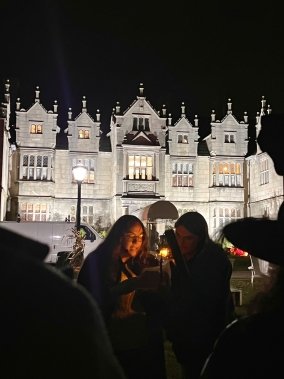
Perhaps Salve’s most notoriously haunted building and once known as Wakehurst, Gerety Hall was modeled after an English manor – complete with stone turrets, carved oak and sprawling gardens. The home belonged to the Van Alen family, whose ties to the Astors placed them among Newport’s elite.
Inside, the laughter of guests once filled the ballroom where society’s finest gathered for summer parties. But the house also knew sorrow. Emily Astor Van Alen died during childbirth, and her husband, James, was said to wander the halls in grief. Later, their daughter-in-law, Margaret “Daisy” Van Alen Bruguiére, became one of Newport’s most formidable figures, until she passed in 1969. The socialite vowed she’d never sell her estate to Salve.
When Gerety Hall eventually became part of Salve’s campus after purchasing the estate from one of her heirs in 1972, some said Daisy’s spirit lingered, unwilling to see her beloved home filled with students and study groups instead of soirées. Today, Gerety Hall is the University’s student center, alive with chatter and events. But on quiet nights, when the wind stirs against the ivy, one might still see a figure watching from the grand staircase or through the windows of the third floor, guarding the home she once loved.
Watts Sherman House
Built in 1876, Watts Sherman House began as a family home before transforming into a nursing facility and later one of Salve’s dormitories.
Its long history of caretaking leaves a palpable warmth, but also stories that ripple beneath the surface. Some students still speak of a boy named Adam – said to have met his end chasing a ball down the stairs – his footsteps heard in empty hallways and soft thuds on the old staircase.
The spirits beyond the gates
The tour ventured just beyond campus to visit Newport’s most famous – and most haunted – estates. At The Breakers, Cornelius Vanderbilt II’s oceanfront mansion, students learned about ghostly laughter and the spectral figure of a young girl, said to be little Alice Vanderbilt, playing long after midnight.
At Carey Mansion, also known as Seaview Terrace, the tales grew darker. Once featured on the Syfy TV series “Ghost Hunters” and its exterior used as the fictional Collinwood Mansion of the original Gothic horror soap opera “Dark Shadows,” its halls are said to echo with organ music and whispers of a woman named Nina, whose tragic romance ended in flames. When Salve later used the house as a dorm, student lore notes that its residents found a mysterious photograph of a ghostly figure that no one could explain.
But for the History Club, this year’s tour wasn’t about fear; it was about appreciation.
As the group concluded their evening outside Ochre Court, the ocean murmured below, and the building glowed softly against the mist and fog. It was easy to see why these stories endure. They remind us that history isn’t only written in archives. It’s felt in the air, whispered through the walls and carried forward by those who listen.
At Salve, the past and present meet in harmony. And sometimes, if you listen closely, you might just hear them speaking to each other.



